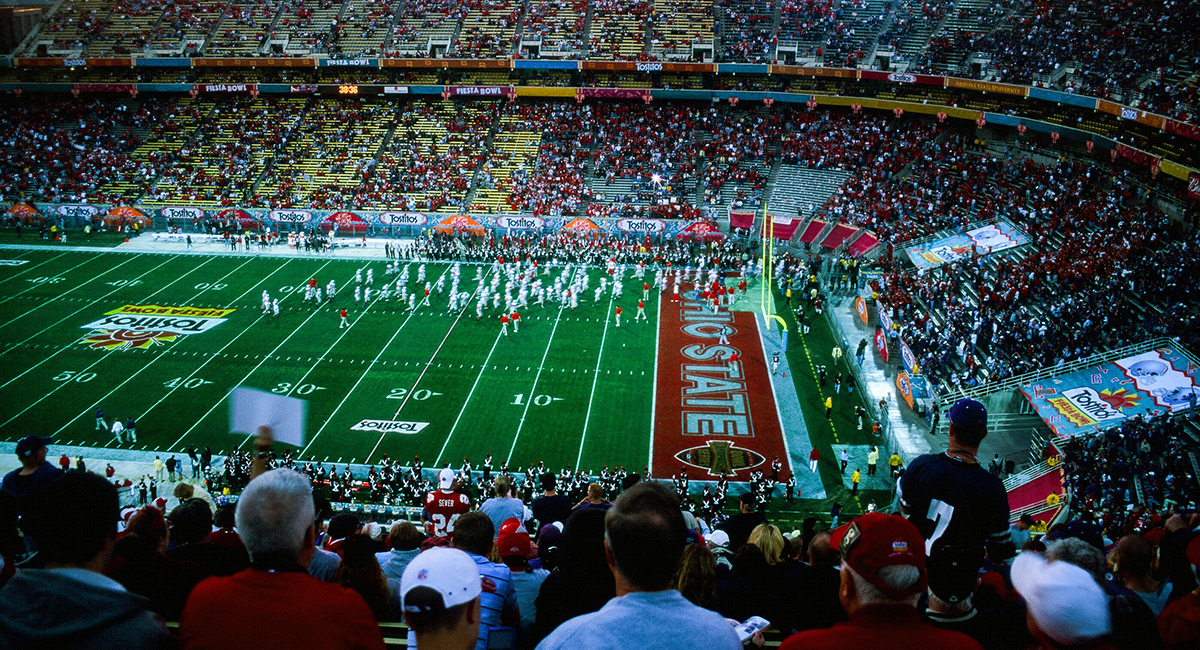Picasso had his Blue and Rose Periods. I am in my Death Period, since most recent posts relate to collegiate death and dying. Even before Covid-19, a number of forces threatened the long-term viability of commercialized college football as played in the Power Five Conferences and by other wannabe football powerhouses. The Covid-19 outbreak will have an indeterminate but likely sizable adverse impact, at a time when higher education as a whole is very vulnerable financially. At the margin, this may hasten some long overdue big changes to college sports in general, and college football in particular.
Very few collegiate athletic programs break even, but gung ho alums and powerful politicians love them, so some subsidy became politically accepted and even demanded in recent decades. However, Covid-19 is clobbering college sports. Already, the loss of NCAA March Madness revenues is costing schools hundreds of millions. Football ticket revenue, already falling ominously at some schools, is likely to be down tremendously in the fall even if games are played. Football, in turn, subsidizes a multiplicity of minor sports.
The situation is particularly dire for the 60-65 Football Bowl Subdivision schools not in Power Five Conferences. Take the Mid-American Conference, 12 schools in the shadow of Big Ten institutions, which even in good years lose on average at least $20 million each on sports—maybe $1,000 per student (the subsidy coming from institutional grants and student fees). These schools are facing academic depression from likely falling tuition revenues (declining enrollments), lower state subsidies and reduced private gifts. Those athletic losses will likely rise sharply as attendance declines this fall—possibly to zero. Schools have to do drastic expenditure reduction. Previously sacrosanct football is now highly vulnerable. How can you justify eliminating a physics major while keeping football? Even some in college sports are troubled: one intelligent head football coach I talked to recently from another school agrees with me: the status quo is unsustainable. Division 3 schools, many small liberal arts colleges, are perhaps less vulnerable as they are already comparatively low cost.
Other woes are accumulating. The public resoundingly favors letting players earn some income selling their likeness on t-shirts and other sporting paraphernalia, and popular resentment is growing of paying football coaches $5 million while star players make a tiny percent of that, unlike in pro football. Parents are keeping their young kids from playing football more, increasing soccer’s already soaring popularity long term. Lawsuits are coming, big time, over the lifetime health effects of concussions.
My friend Jim Bennett, economist and writer extraordinaire, has a wonderful new book-length expose, Intercollegiate Athletics, Inc. He details how in the early days, college sports were student-directed, and games were largely for kids to have fun and get some exercise—physical education. Not radically different from Division 3 sports today.
What to do? One thing: we must dramatically lower intercollegiate athletic costs. Take football. Seasons should be shorter (and probably games, which last forever), teams should be much smaller (rosters limited to 60 players), there should be far fewer coaches (a maximum of five per team?), conditioning gurus, publicists, etc. No coach should make more than the university president. Legendary coaches like Woody Hayes and Knute Rockne did not earn huge salaries. Most (all?) postseason bowl games should be eliminated. Either football should be ancillary to the educational enterprise (athletic department reporting to the chief academic officer), or transformed into a non-collegiate activity not directly associated with higher education. What will ESPN do? That is their problem.
I have long agreed with Dave Ridpath, head of the reformist Drake Group, that it will take outside intervention to truly reform intercollegiate sports—the NCAA is part of the problem, not the solution. We need a blue ribbon federal commission not dominated by athletic directors, coaches, and fervent sports fanatics. That said, a true existential crisis in higher ed, long coming and triggered by Covid-19, might be enough to galvanize boards of trustees, legislators, and others to change this expensive collegiate embarrassment. As Plato and Rahm Emanuel once said (two thousand years apart), “Necessity is the mother of invention, so never let a good crisis go to waste.”












